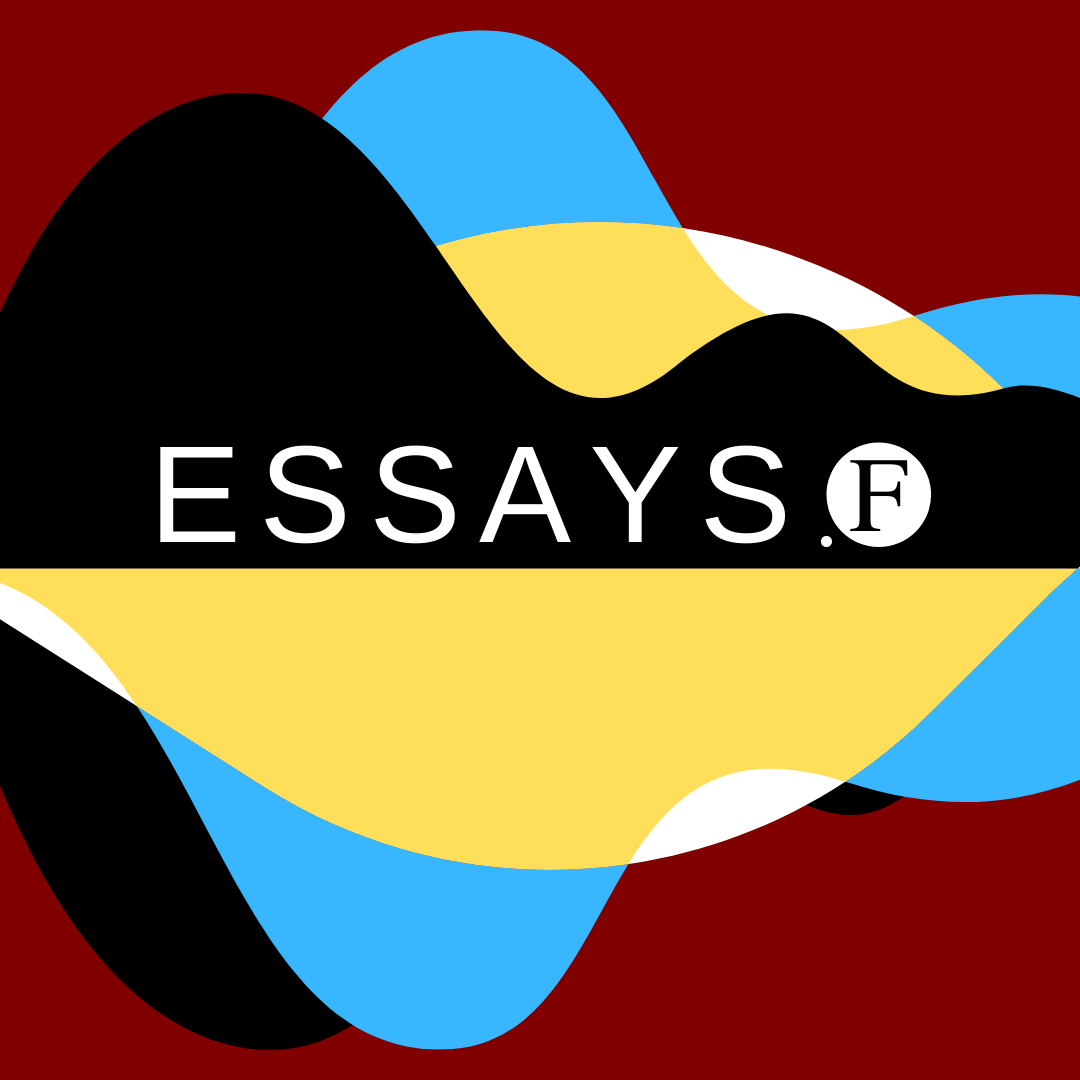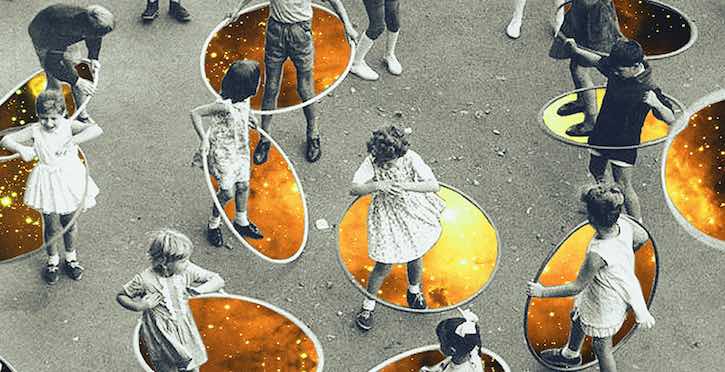Philosophy at the Speed of Art
Michelle Boulous Walker offers lessons in slow philosophy
A recent exhibition at the Gallery of Modern Art in Brisbane, Australia, (March 2017) featured the return of Céleste Boursier-Mougenot’s stunning installation of live finches, accidental music, and coat hangers, From Hear to Ear. The work is a combination of technical, aesthetic, and sensorial elements exploring the complexity that evolves when space, light, projection, and image are drawn together in a sculptural whole. In effect, visitors to the space listen to the motion of the birds whose movements create a kind of three-dimensional acoustic score. As visitors move through the space, the birds react, and this is captured in a complex array of harpsichord strings, piano tuning pins, contact microphones, amplifiers, guitar processors, and speakers. Boursier-Mougenot sees himself as shifting from the composer who organizes sounds to fit a pre-determined pattern to the artist who listens to accidental avian acoustics, and he is fascinated with what takes place when other visitors listen. Rather than being concerned with the visitor’s participation, Boursier-Mougenot is interested in the quality of attention that the experience provokes. His hope is that the experience of ‘being-there’ amplifies ‘the feeling of the present moment’, encouraging the visitor to ‘witness their own present time’. The installation is most certainly a success: it slows time as it amplifies our attentive awareness.
We may well ask why the twittering of Boursier-Mougenot’s finches is significant, and what, if anything, this has to do with philosophy. In an age dominated by fast-Tweeting, immediate response, thoughtless politics, and Newspeak, it seems appropriate to return to the attentive slowness of birds in flight. Boursier-Mougenot’s art provides an antidote to the speed and haste of the modern Twitter-sphere. Not only the haste, but the mindless and often thoughtless nature of our enveloping cultural worlds. Aesthetic experience provides opportunities not only for attentive awareness, but for waiting and presence more generally. Through art, we explore complexity in ways that open out our world, rather than closing it down. We sit with intensity, atmosphere, and mood.
Slow philosophy shares important elements with aesthetic experience. By drawing upon and reviving philosophy’s ancient legacy of contemplation, it works alongside aesthetic experience. In the West, philosophy begins as a love of wisdom, a formative journey that propels the philosopher from ignorance towards the wisdom of a living consciousness. As Pierre Hadot reminds us, philosophy is a way of life rather than a systematic account of knowledge or a series of abstract concepts explaining life, both of which distance the philosopher from it. Philosophy begins in wonder, the attentive practice of sitting-with the things of the world.
Yet as the speed and haste of modern life infiltrates the cultural spaces we traditionally devote to thought, philosophy is ever more under threat. Attention gives way to calculation, and thinking is reduced to an empty, technical application of knowledge as facts. An instrumental thought announces our flight from thinking, incapable as it is to collect itself, to pause, to consider, to contemplate. System, rule, and efficiency dissolve the slow, attentive process that philosophy has once been. In this space, slow philosophy announces the return of the heightened awareness that saves the dignity of thought. Such heightened awareness has obvious benefits for how we do philosophy today. But it is relevant, too, for how we negotiate the complexities of modern life, dominated as it is by the haste of internet scrolling, scanning, and skimming. At such a time, slow philosophy challenges the ever-more thoughtless quality of what passes for public debate. By drawing our attention to the things of the world, to a dwelling with the world, slow philosophy urges us to slow down and to open in ways that will transform our experience of the world. Opening requires time and patience, the kind of heightened attention we witness in aesthetic experiences such as Boursier-Mougenot’s twittering finches.
Slow philosophy is, above all, the cultivation of a heightened attentiveness that allows us to engage complex and demanding thoughts. Unhurried time provides the ground necessary for such attentiveness to emerge. However, slow philosophy is not simply opposed to speed. In certain contexts, speed is both desirable and necessary. In slow philosophy, the issue is not to pit fast against slow, but more significantly to differentiate between slowness and haste. Haste is never helpful when we are engaging with complex thoughts or attempting to encounter the strangeness or ambiguity of the world. Slowness, unlike haste, provides the ground for an intense relation with the strangeness of the world. Intense encounters with complex thoughts form us in ways that we cannot predict. Wonder at what is strange and other is the beginning of our formation through an intense encounter. Wonder slows us, urging us to pause, to consider what we do not know, perhaps what we cannot know. Wonder initiates us into the realm of the other, providing us with an attentive awareness of the rare and the new. Wonder is the passion of moving towards; the slow encounter that uncovers the things of the world. Wonder is the slow approach; the meandering path that allows us to fully experience our proximate world.
Attentive listening can provide the context for wonder to emerge. And just as we understand the importance of such listening in Boursier-Mougenot’s multi-sensorial experience of ‘being-there’, so too in slow philosophy. Listening provides a context of proximity and nearness, one at odds with thinking reduced to calculation or to knowledge narrowly defined. Attentive listening receives without being passive. (Or perhaps it is better to say that it receives with an active form of passivity.) Attentive listening keeps wonder and questioning alive, and is thus a privileged mode of our nearness with what is other and strange. Listening helps us literally to pay attention, to pause, to collect ourselves, rather than to extract a singular unambiguous meaning or message. Listening is an attitude of attentiveness that orients us back towards the world, an attentiveness to what sounds obscure and strange and other. When we really listen, we suspend our usual inclination to pass a hasty judgement or to decide definitively. Listening helps us to avoid the finality of the verdict; it helps us to register the habitual ways in which we rush to judgement, without patiently waiting for the full complexity of thought to emerge. Listening fosters conversation, dialogue, and engagement with others. It offers alternatives to grasping the world so as simply to integrate it into our pre-existing world view.
Slow philosophy provides the slow, attentive mode that enables an open engagement with thought. This slowness can, however, take various forms. For example, if we look to musical notation and tempo, we discover that slowness exists along a continuum from moderately to very slow. Between the moderate walking pace of andante and the extremely slow gait of larghissimo, we discover the possibilities of andante moderato, adagietto, adagio, larghetto, largo, lento, and grave. Additionally, we encounter ritardando and rallentando, both indicating a gradual slowing down. It is useful to think of slow philosophy as thought that occurs along this continuum, or even along the entire continuum of tempo. Of course, to stretch this musical analogy a little further, we observe that while musical performance is in effect fleeting and ephemeral, it takes long hours of rehearsal and practice to obtain proficiency (let alone virtuosity), and to maintain it. At any given moment, the openness and attention we seek, so as to engage the strangeness and complexity of the world, may be accessible to us in a number of ways. Slowness may characterize our initial encounter with complexity, and yet successive encounters may occur in quite diverse ways. Slow engagements may build over time to sudden bursts of insight where, however fleetingly, we engage the complexity of the world in a fully attentive manner. The moment of ‘Aha-Erlebnis’ is one way of imagining the culmination of slow and attentive thought in a moment of instant gestalt or epiphany.
The heightened attention or fine-tuned attention to detail and nuance that slow philosophy encourages draws us closer to the aesthetic experience, wherein we sink slowly into the atmosphere or mood of a work. In this, we experience an openness to thought, an unhurried reception, a meditative relation, a patience, a waiting, an intimacy, a wondrous appreciation, an attentive listening, a careful engagement, a proximity and nearness, a generosity, and a kind of grace—the grace of a purely transformative attention. With Simone Weil, we can speak of a grace that abandons the gravity of a self-centred and self-aggrandizing philosophy. Slow philosophy foregoes the gravity of the self to encounter the possibility of ethics.
Slow philosophy provides us with experiences that can transform our all too often instrumental relations with the world. It offers us opportunities to slow our habitual modes of haste or to change our habits altogether, to suspend or dispel our hurried judgements (which are, in effect pre-judgements, prejudices), to be open to new modes of judgement unencumbered by existing standards, and embrace the ambiguity and complexity of thought. It teaches a discerning quality of attention, and is quite simply an unhurried approach towards thinking and thought. Slow philosophy opens an attentive, receptive space where ethics and aesthetics meet. In fact, it is this quality of attention—the intensity of engagement—that returns philosophy to its earliest vocation. Slow philosophy restores the formative potential of thinking and thought, making philosophy once again a practice for enhancing life.
Image credit: Mypouss, ‘Guitar hero‘
The Source Code
This essay is based on the book Slow Philosophy: Reading against the Institution by Michelle Boulous Walker (Bloomsbury, 2017).






